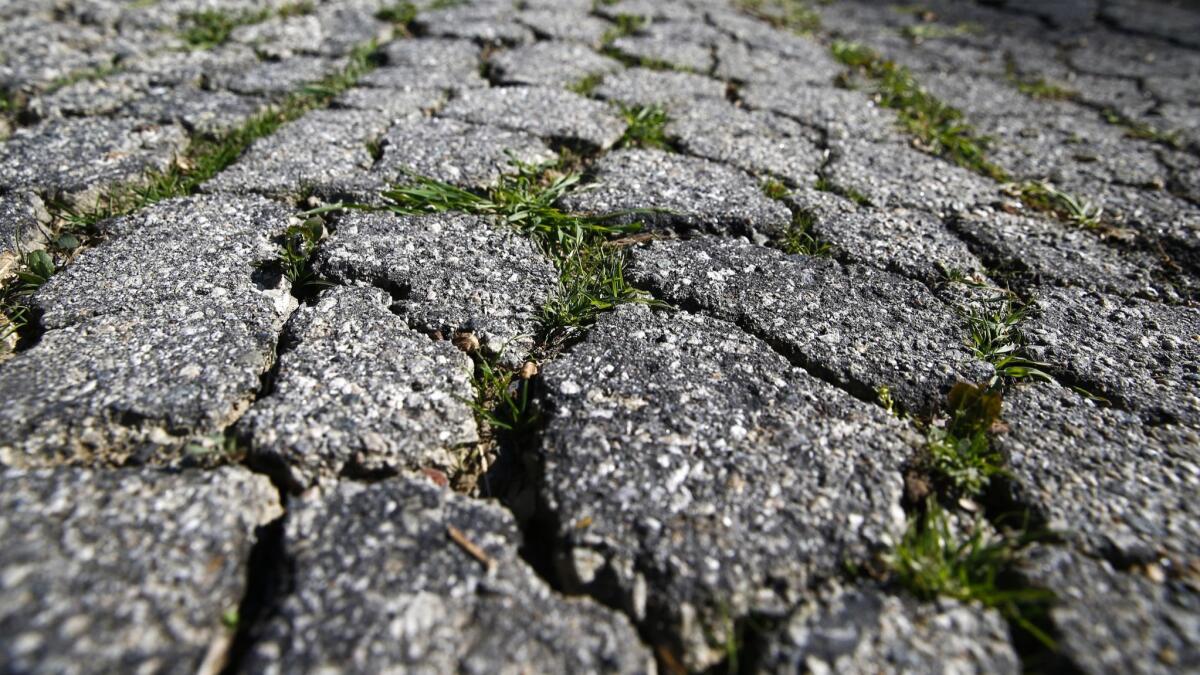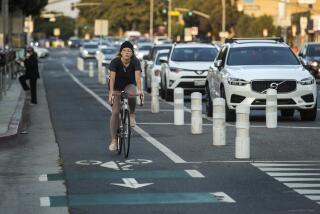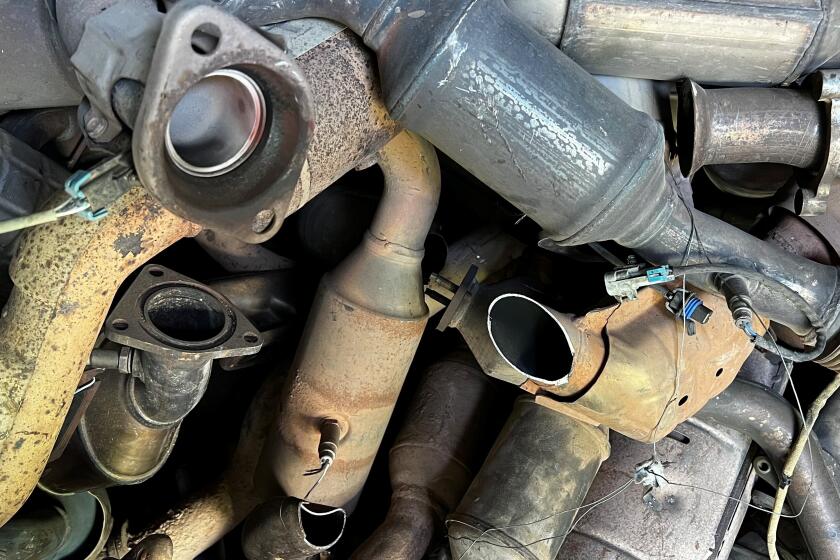L.A. could roll back rules that prevent streets from being repaved

- Share via
Los Angeles could soon roll back an unusual set of city rules that have prevented some streets from being repaved since the Great Depression.
Some streets were officially “withdrawn” from public use in 1936, when the city said it was too strapped to fix dangerous streets. Others were pulled in the decades since because they were not up to city standards, were too expensive to maintain or were crime magnets, according to city reports. All in all, engineering officials say that 374 streets were formally yanked from public use.
The obscure phenomenon has flabbergasted and angered L.A. residents. The Times reported earlier this year that in Woodland Hills, residents near San Miguel Street said they had no idea about its unusual status until they tried to get it fixed. Nothing about it looked different — no barricades, no warning signs — except for its crumbling pavement. Cars regularly cruise over it like any other street in the rolling hills.
Yet the Bureau of Street Services said that because of the old ordinance, it would not be repaved. City crews would fill potholes and do other minor repairs, they said, but not resurfacing.
City Councilman Bob Blumenfield, who represents Woodland Hills and other neighborhoods in the western San Fernando Valley, said it was absurd that some streets had not been repaved in eight decades. In many cases, he said, “you have no clue that you’re driving or walking on a street that is technically not in public use.”
At a meeting Wednesday, a City Council committee headed by Blumenfield recommended drafting an ordinance that would roll back the old rules and officially bring the streets back into public use. The decision will now go to the full council for a vote.
The problem has bedeviled some neighborhoods for years. Blumenfield said that when he first asked to reinstate all of the withdrawn streets in his district, he was warned by city staff that it would take “enormous resources” to even begin that process. So instead, he said, he and his staffers worked to reinstate streets one by one in recent years, a painstaking process that involved combing through old records.
Under city rules, streets could typically be reinstated if they were found to be “safe and passable.” L.A. officials had interpreted that to mean they needed to be up to city standards — a bar that could be difficult to reach for streets that were narrow or lacked a curb or gutter, they said.
Yet residents pointed out there were other streets with the same shortcomings that had never been pulled from public use.
City staffers said in a report that they had also found that, like San Miguel Street, many such streets “are now being used by the public even though they are technically withdrawn.” In light of that, they said, it made sense to repeal the old rules, then come up with new ways to address any streets that should truly not be in public use.
“It’s hard to say they’re not ‘safe and passable’ if we’re letting the public drive on them,” deputy city engineer Ted Allen said.
The unusual decision to withdraw streets, spurred by a state statute that has since been repealed, was intended in part to prevent possible claims against the city for damage from defective roadways, according to archival records. But Councilman David Ryu said Wednesday that the city still bore liability for such streets.
Reinstating them “is such a no-brainer,” Ryu said at the committee meeting.
Blumenfield cautioned that when the law is ultimately repealed, residents will not see instant change. But reinstatement means the streetswill at least be eligible for repaving, he said, and people living along those streets will no longer be treated as “second-class taxpayers.”
“Now there will be a glimmer of hope,” he said.
Twitter: @AlpertReyes
More to Read
Sign up for Essential California
The most important California stories and recommendations in your inbox every morning.
You may occasionally receive promotional content from the Los Angeles Times.











